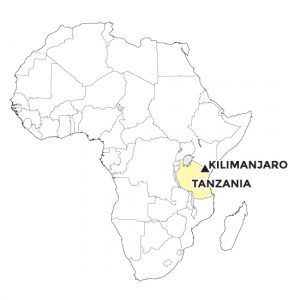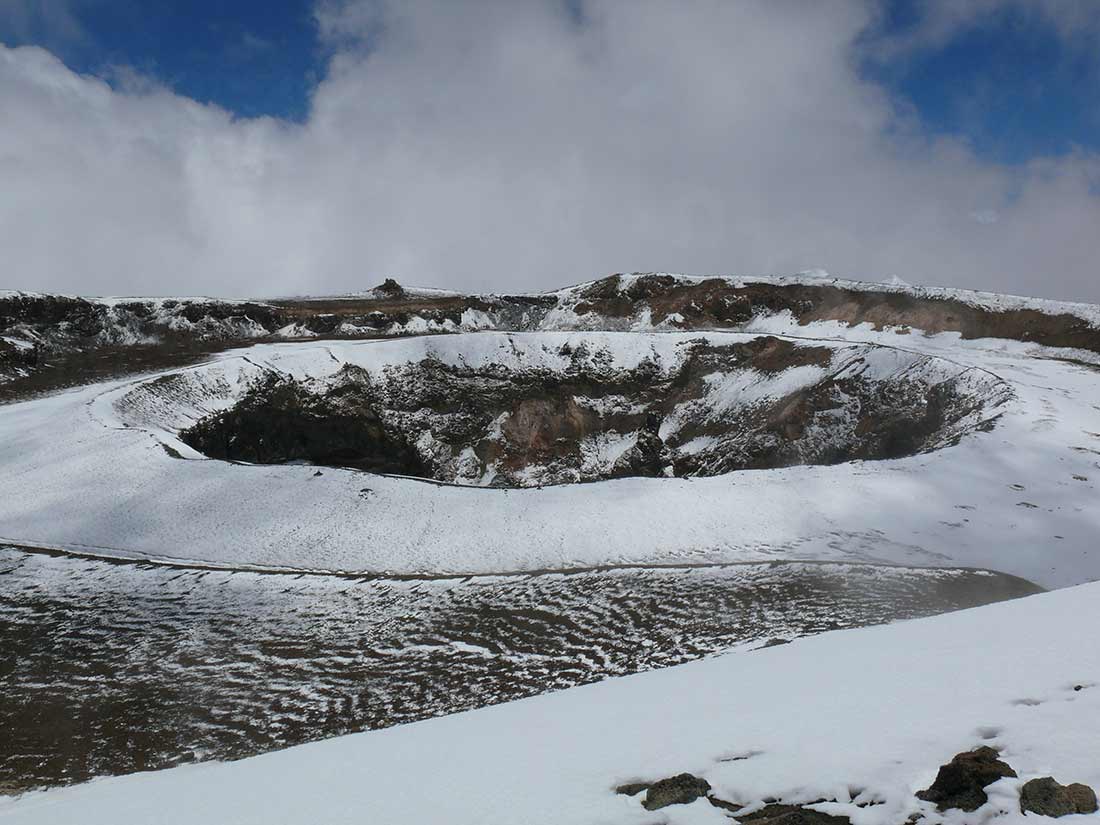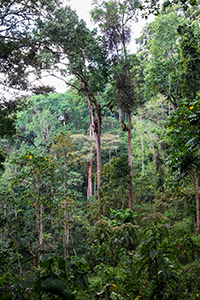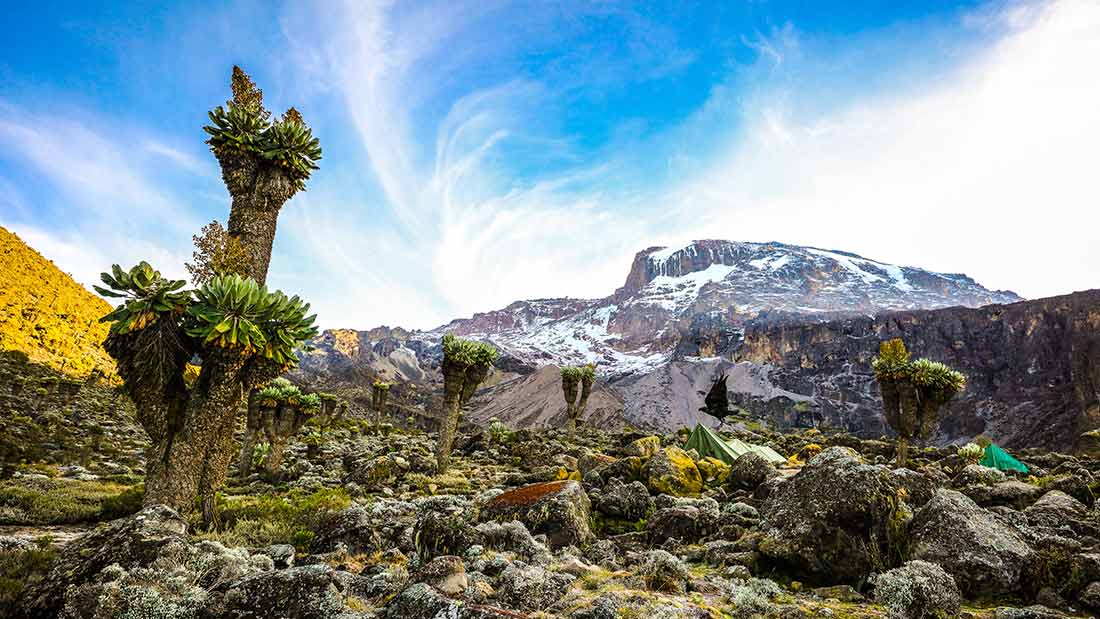Mount Kilimanjaro stands at 19,341 feet above sea level. it is the highest mountain in Africa and also is the highest free-standing mountain in the world. It is three volcanic cones, Kibo—the summit, Mawenzi, and Shira.
We hope you know it is on the continent of Africa, in the country of Tanzania. But where is Kilimanjaro located in Tanzania? Mount Kilimanjaro falls in the upper east side of the country, on the border of Kenya.

Kilimanjaro Facts
Geology Kilimanjaro is the highest free-standing mountain. It does not fall in a mountain range.
As we mentioned above, it is three volcanic cones Kibo, Mawenzi, and Shira.
According to the Journal of Volcanology and Geothermal Research, Shira was active from 2.5 million years ago until 1.9 million years ago. It’s thought that what is now the Shira plateau was a caldera that had collapsed in on itself. This is like the Ngorongoro Crater. Additionally, erosion of the side walls has made it flat.
Mawenzi and Kibo, are pretty young in comparison, having shown signs of volcanic activity starting around 1 million years ago. At the top of Kibo is a large crater, formed after the volcano erupted. Like Shira, it also collapsed in on itself. The summit of Uhuru Peak is on the crater rim. Furthermore, Mawenzi and Shira are both extinct volcanoes, but Kibo is dormant.
Read more here: https://kilimanjarosunrise.com/is-mount-kilimanjaro-an-active-volcano/
Seven Summits
As we have said on our home page, Kilimanjaro is one of the “Seven Summits”. That means it is the tallest peak on the continent of Africa. For reference, the other six are:
1. Mount Everest in Asia
2. Aconcagua in South America
3. Denali in North America
5. Mount Elbrus in Europe
6. Vinson Massif in Antarctica
7. Puncak Jaya in Oceania/Australia
You can read more here: https://kilimanjarosunrise.com/seven-summits-highest-peaks-on-each-continent/
First Summit
During a journey to the interior in 1861, a German explorer, Baron Carl Claus von der Decken, met a British geologist, Richard Thornton. Together, they climbed Kilimanjaro. They reached an altitude of 8,200 feet while surveying the area. Their estimate of the mountain’s height was 20,000 feet. It was Richard Thornton who first identified the mountain as a volcano.

However, Hans Meyer claimed the first actual summit of Mount Kilimanjaro. His first attempt in 1887 was unsuccessful.
In 1889, Meyer returned to Tanzania with the help of Ludwig Purscheller, an experienced Alpine climber. He established a team of porters and a guide to go with him. On October 6, 1889, they reached the summit.
Read more here: https://kilimanjarosunrise.com/where-did-the-name-kilimanjaro-come-from/
First Woman To Summit

Sheila MacDonald as a child spent a lot of time scaling Scottish peaks with her father. In 1927, while visiting relatives in Africa, she joined a group of adventurers and began her trek up Kilimanjaro. According to reports, she drank champagne and whiskey to keep her strength up. Even after the rest of her team abandoned their attempts at the summit, she pushed on. She reportedly made the summit on September 27, 1927.
East African Mountain Club
Richard Reusch and Clement Gillman founded the East African Mountain Club in the 1920s. It is the forerunner of modern Kilimanjaro tourism.
Reusch Crater honors Richard Reusch, who was the seventh person to reach the summit. He was also the first to see the Ash Pit.

Gillman’s Point honors Clement Gillman.
They collaborated to construct the first huts on Kilimanjaro. Their huts are still used today along the Marangu hut. They also organized the first commercial climbs and trained the first mountain guides.
The East African Mountain Club was in charge of the Kilimanjaro Treks until the Tanzanian government acquired control of the climbs in 1973.
The Tallest Tree in Africa

Andreas Hemp from the University of Bayreuth in Germany has been researching trees for more than 20 years.
In some of Kilimanjaro’s isolated valleys, far from the climbing routes, she made a discovery. She found what she believed were the tallest trees in Africa.
Until recently, she could only approximate the height of these trees due to restrictions in the measuring equipment. However, laser tools have now proven that Africa’s tallest tree, is in fact, the Entandrophragma excelsum.
The tallest measures a massive 267 feet tall. Hemp estimates that it’s approximately 600 years old.
Scientists are calling for the protection of this valley.
Height and Oxygen
The amount of oxygen in the air at 19,341 feet is approximately half of what is available at sea level. This is because the atmospheric pressure decreases as you ascend. 20.8% of oxygen is still present in the actual air.
Acute Mountain Sickness, high altitude pulmonary edema (HAPE), and high altitude cerebral edema (HACE) are brought on by the combination of this lower atmospheric pressure and reduced oxygen availability.
Read more here: https://kilimanjarosunrise.com/is-climbing-kilimanjaro-dangerous/
Kilimanjaro Deaths
The National Parks Authority does not release statistics on the number of deaths each year. The number of fatalities is thought to be between 3-6 per year. Some estimates place the number much higher.
Porters do occasionally die as well, however, the majority of deaths that are mentioned in the media are those of tourists.
Complications related to altitude are the primary cause of these fatalities. But several unprepared porters have also perished from hypothermia. That is why it is crucial that you climb with a reputable operator. One that is a member of the Kilimanjaro Porters Assistance Project (KPAP). KPAP monitors the well-being of porters on Kilimanjaro.
Another cause of death has been rock slides. Particularly along the Western Breach. In 2006–2007 there were frequent slides resulting in the deaths of four climbers.
World Record Holders
Is it common for people to ask us if they are too old to climb Kilimanjaro? We tell them they are not too old. We do require a doctor’s note saying they are fit to climb.
Oldest Person to Summit Mount Kilimanjaro

When Anne Lorimor, a great-grandmother from Arizona, set out to break the record held by Angela Vorobeva (Russia) for the oldest climber of Kilimanjaro, she wasn’t concerned about being old. She broke the record at 86 years and 267 days old. Incidentally, that was also the oldest for any person to make the summit.
Fred Distelhorst of Vail, Colorado, broke her record when he summited on July 20, 2017. He was 88 years old.
Anne Lorimor then went back and broke the record again at 89 years and 37 days old. She did this on July 18th, 2019.
Youngest Person to Summit Kilimanjaro
The official minimum age the National Parks Authority allows one to summit Kilimanjaro is 10 years old. But, by special permission, younger children have been allowed to attempt Kilimanjaro. After all, record-breaking is good for tourism. The current record holder is a young man named Coaltan Tanner from Albuquerque, New Mexico. Ever since his parents read him a book about mountains he was obsessed with climbing Everest. His parents got a special permit to allow him to climb Kilimanjaro with them.
At the age of 6 years old, he stood at Uhuru Peak with his parents on October 2018. The previous record-holder was Montannah Kenney, a girl from Arizona who was 7 years old.
Fastest Ascent
Normally, we preach “pole, pole” (slow, slow), when it comes to successfully making it to the summit. But, some people, in the pursuit of world records, disregard this recommendation and climb as fast as possible to Uhuru Peak.
The record holder for the fastest summit is held by Karl Egloff. He is a Swiss ultra-marathon runner. He ran the Umbwe route and reached the summit in four hours and fifty-six minutes in August 2014. His roundtrip time is six hours and forty-two minutes!
The title of quickest ascent by a female is held by Kristina Shou Madson from Denmark. Subsequently she is also an ultra-marathon runner. Kristina ascended and descended in a stunning six hours and fifty-two minutes!
Final Thoughts
We hope you enjoyed reading these Kilimanjaro facts about this great mountain: its history, and its geology. Along with the right Kilimanjaro tour operator, the right gear, being in good shape, and a sense of adventure, you too can experience this mountain firsthand.





